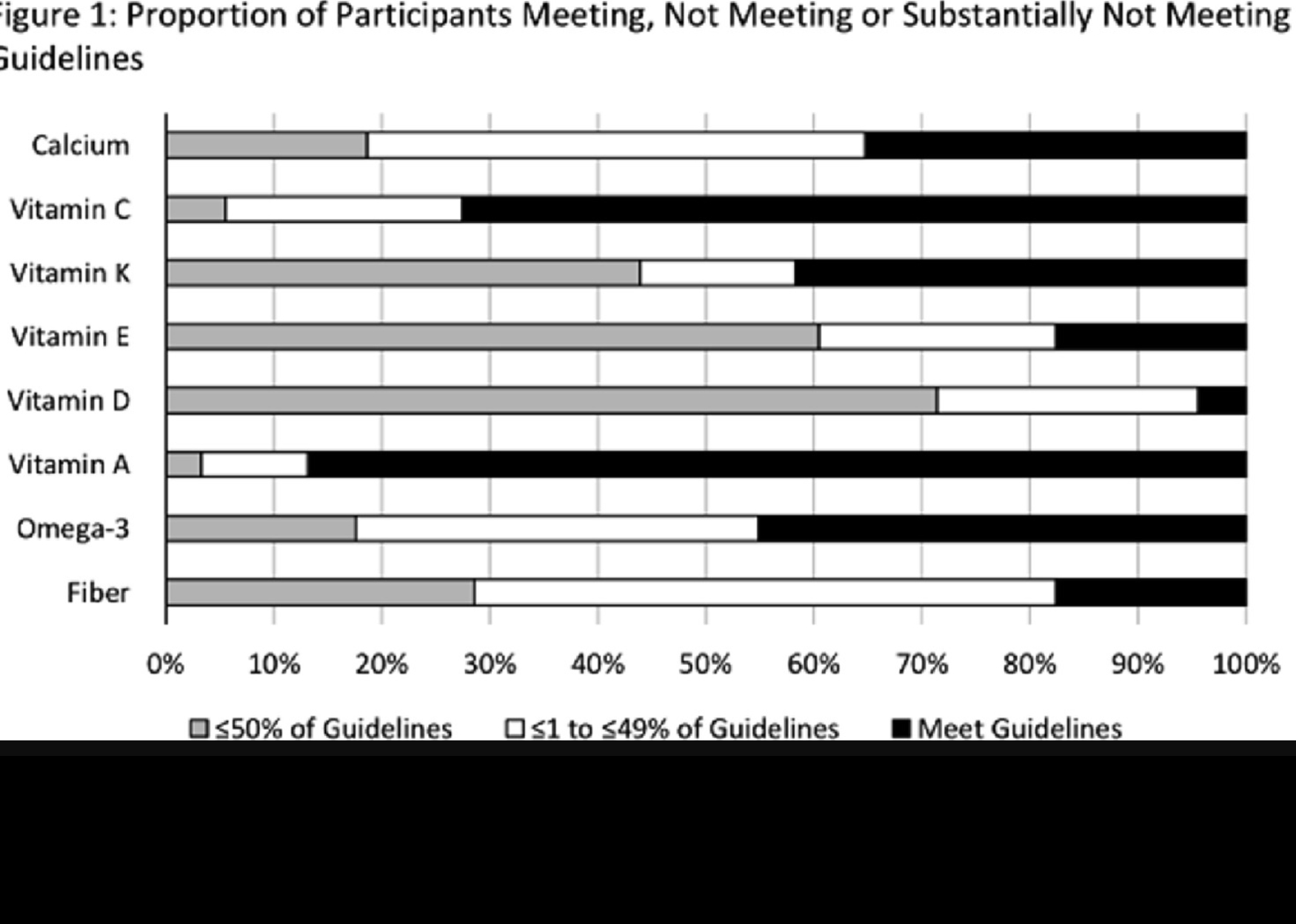Dietary intake in youth with a sport-related knee injury - implications for secondary prevention of post-traumatic osteoarthritis
K. Mori Osteoarthritis and Cartilage VOLUME 28, SUPPLEMENT 1, S391-S392, APRIL 01, 2020
Purpose: Sport and recreation participation is the leading cause of injury requiring medical attention amongst school-aged children and adolescents, with approximately 40% of these injuries affecting the knee. Knee injuries increase the risk for post-traumatic osteoarthritis (OA), with 50% of youth who suffer a significant knee injury developing OA within 10-15 years. Given no OA disease-modifying treatment exists, preventative strategies are needed. Nutritional adequacy may be an important target for preventing OA following injury given the vital role of key nutrients in bone and joint health. Further, as obesity is an established risk factor for OA, a balanced macronutrient intake is likely essential to lower the risk of OA after joint injury. Currently, little is known about the diets of youth at high risk of developing OA due to a sport-related knee injury. This research explores the dietary intakes of youth with and without a recent sport-related knee injury in comparison to Health Canada Dietary Reference Intakes (DRIs).
Methods: Participants include the first 91 participants in an ongoing inception cohort study, including 52 youth who had a sport-related knee injury within the last 3-months and 39 uninjured controls. Dietary assessment consisted of a self-reported 3-day food record (3dFRs; 2 weekdays and 1 weekend day) logged through a web-based application (MyFitnessPal©). Dietary records were analyzed using FoodProcessorII (version 11.6©). For 3dFRs to reflect typical eating patterns, participants were advised not to alter their intake and all MyFitnessPal© prompts related to restricting diet were disabled. Supplement use was captured in 3dFRs and a study questionnaire. A senior nutrition student followed up with participants to probe for additional details in 3dFRs. Participants with 3dFRs containing missed meals, completed incorrectly or insufficiently (less than 3 days) were excluded from analysis. Intake of macronutrients (protein, carbohydrates, fat, fiber) and key micronutrients (omega-3, vitamin A, D, E, K, C, calcium) important for bone and joint health were compared to DRIs, including the Acceptable Macronutrient Distribution Range (AMDR), Estimated Average Requirement (EAR) and Adequate Intake (AI) as appropriate. Other outcomes included total body percent lean and fat mass (dual-energy x-ray absorptiometry; DXA) and physical activity (tri-axial accelerometer). Descriptive statistics [means or proportions (95% CI) or median (range)] were calculated for all demographic and dietary outcomes by study group as applicable. The proportion (number) of participants not meeting (≤1-49% of the EAR or AI) or substantially not meeting (≤50% of the EAR or AI) DRIs were summarized by study group. Unadjusted logistic regression (odds ratio; OR, 95%CI) was used to explore the relationship between injury history and not meeting DRIs. Due to multiple comparisons, statistical significance was set as α=0.004 (α=0.05/13=0.004).
Results: The median participant age was 16 years (range 11-20) and 71% were female. Table 1., Table 2. summarize participant characteristics and dietary outcomes by study group, respectively. The majority of participants met protein and carbohydrate DRIs with 45% exceeding fat DRIs. Across both study groups, there was a high prevalence of participants not meeting guidelines for fiber (89%), vitamin D (98%), E (87%), K (65%), and calcium (74%). Intake of vitamin D was substantially below (i.e. ≤50% of the EAR) guidelines for 71% (n=65) of participants (Figure 1). There was no difference in the odds of not meeting dietary guidelines between injured and uninjured participants (Table 3).
Conclusions: A high proportion of active youth did not meet recommended dietary guidelines for nutrients vital to bone and joint health, including fiber, vitamin D, E, K, and calcium. This is particularly concerning for active youth who are at increased risk of OA after suffering a sport-related knee injury. Further investigation into the diets of active youth who suffer a sport-related knee injury is warranted to determine nutritional targets for optimizing knee tissue recovery and preventing or delaying the onset of OA.














